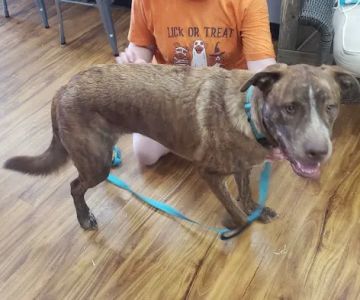- Understanding Why Dogs Chase Cars
- Steps to Train Your Dog to Stop Chasing Cars
- Using Positive Reinforcement for Dog Training
- Setting Up a Safe Training Environment
- When to Seek Professional Help
Understanding Why Dogs Chase Cars
Chasing cars is a common but dangerous behavior for many dogs. While it may seem like an instinctual act of play or curiosity, the behavior can stem from various underlying causes. Some dogs chase cars because they view them as moving objects that need to be caught, while others may be responding to the excitement of fast-moving vehicles. Dogs with high energy levels or a prey-driven instinct, such as herding breeds, are often more prone to engaging in this behavior.
It's important to understand that this behavior is not only risky for your dog but can also lead to accidents. Car chasing often involves running into the road, which could result in injury or worse. The key to managing this behavior is to address the root cause and train your dog to redirect its focus away from vehicles.
Steps to Train Your Dog to Stop Chasing Cars
Training your dog to stop chasing cars requires patience, consistency, and positive reinforcement. Here are the key steps to guide you through the process:
- 1. Start with Basic Commands: Before addressing the car-chasing behavior, ensure your dog is well-versed in basic commands like "sit," "stay," and "come." These commands will provide the foundation for redirecting their focus when a car passes by.
- 2. Create Distractions: Begin training in a controlled environment where you can gradually introduce distractions. Use treats, toys, or other objects to keep your dog’s attention on you instead of the cars. Start with less distracting situations and work your way up to more realistic scenarios.
- 3. Use a Leash: When practicing in areas with cars or other distractions, always keep your dog on a leash. This helps you maintain control and prevent the dog from running into traffic. Use the leash to gently guide them away from the vehicle and refocus their attention on you.
- 4. Gradual Exposure: Slowly expose your dog to moving vehicles in a safe, controlled environment. Start with parked cars and gradually progress to cars driving by at low speeds. Reward your dog with treats or praise whenever they remain calm and don't chase the car.
- 5. Consistency is Key: Consistently practice these steps over time. The more your dog associates calm behavior with positive rewards, the more likely they are to stop chasing cars. Regular training sessions will also help reinforce good behavior.
Using Positive Reinforcement for Dog Training
Positive reinforcement is a powerful tool in training your dog to stop chasing cars. Instead of punishing unwanted behavior, focus on rewarding desirable actions. This method encourages your dog to repeat behaviors that result in positive outcomes.
For example, when your dog ignores a passing car and stays focused on you, immediately reward them with a treat or praise. This reinforces the behavior you want to see. Over time, your dog will learn that staying calm and focused on you is more rewarding than chasing after cars.
It's important to choose rewards your dog finds motivating. Whether it’s a favorite toy, treat, or verbal praise, using rewards that excite your dog will enhance the effectiveness of the training.
Setting Up a Safe Training Environment
Training your dog in a safe and controlled environment is crucial for both their safety and the success of the training. Here are some tips for setting up an ideal training space:
- 1. Choose a Low-Traffic Area: Start training in a quiet, low-traffic area where there are few distractions. This will allow you to focus entirely on the training process and keep your dog safe while learning.
- 2. Use a Long Leash: If possible, use a long leash or training lead to give your dog more freedom without compromising control. This allows them to move around and explore, while you can still intervene if they begin to chase a car.
- 3. Gradually Increase Distractions: Once your dog has mastered the basic commands and is consistently not chasing cars, gradually introduce more distractions. This could include cars passing by at slow speeds, then progressing to faster-moving vehicles. Always monitor your dog closely during these training sessions.
By gradually increasing the difficulty level of the training, your dog will learn to remain focused on you regardless of the distractions around them.
When to Seek Professional Help
While many dogs can be trained to stop chasing cars with patience and consistency, some dogs may require more specialized help. If your dog’s behavior is particularly persistent or dangerous, it may be worth consulting with a professional dog trainer or behaviorist.
Professional trainers can offer personalized strategies and techniques that are tailored to your dog’s specific behavior and needs. They may also help address any underlying anxiety or fear that could be contributing to the car-chasing behavior.
At Hidden Brook Veterinary, we understand the challenges pet owners face with problematic behaviors like car chasing. Our team is ready to provide advice and refer you to expert trainers who can help resolve this issue in a safe and effective manner.












